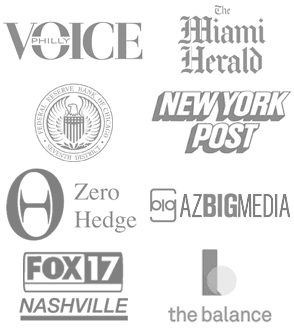In 2025, with median home prices at $412,300 (National Association of Realtors) and 30-year mortgage rates at 6.8% (Bankrate), first-time home buyers face steep challenges. President Trump’s 2025 housing initiatives aim to ease these barriers through tax incentives, deregulation, and federal land development. The RefiGuide continues to explore these 1st time home programs, their eligibility, benefits, and limitations.
New Changes to Trump’s Policies to Help New Home Buyers in the US
In 2025, with median home prices at $412,300 (National Association of Realtors, July 2025) and mortgage rates averaging 6.8% (Bankrate), first-time home buyers face daunting barriers. President Trump’s administration has introduced policy changes to enhance affordability, particularly through the Federal Housing Finance Agency (FHFA) under Director Bill Pulte. A significant update allows Fannie Mae and Freddie Mac to adopt VantageScore 4.0 credit scores, incorporating rent and utility payments into mortgage qualifications.
This shift, announced in July 2025, aims to revolutionize the mortgage market by recognizing on-time rent payments as indicators of creditworthiness. Previously dominated by FICO models, the system now promotes competition, potentially lowering costs for lenders and borrowers. Silvio Tavares, CEO of VantageScore, hailed it as a “revolution” that could enable millions of creditworthy Americans to own homes. This means easier loan approvals, especially for renters without traditional credit histories, as VantageScore 4.0 boosts scores for those with consistent payments.
Implementation details are evolving, with the Mortgage Bankers Association (MBA) noting “numerous questions” on data reporting and verification. Lenders can use VantageScore without new infrastructure, sticking to the Tri-Merge system. Experts like Redfin’s Daryl Fairweather see it as a “win for competition,” potentially reducing closing costs, though savings for buyers remain uncertain. Shannon McGahn of the National Association of Realtors called it a “major step toward equitable underwriting.”
This policy aligns with Trump’s broader agenda, including deregulation to cut housing costs (23.8% from regulations, per NAHB) and federal land development for affordable zones. Amid high prices ($440,950 median listing, Realtor.com), it addresses the 1-4 million home shortage. Senator Jim Banks praised it as advancing the “American dream.”
Challenges persist: tariffs may raise material costs, and full benefits depend on smooth rollout. For new buyers, combining this with FHA loans (3.5% down for 580+ credit) could ease entry. Trump’s FHFA changes offer hope, fostering a more inclusive market in 2025. Read Newsweek article.
Opportunities and Insights on Trump First-Time Home Buyer Programs
Trump’s agenda, per Make Florida Your Home and the 2024 GOP platform, focused on:
-
Tax Incentives: Proposed credits or deductions, similar to the 2008 $8,000 credit, and state MCCs ($2,000/year).
-
Deregulation: Reducing regulatory costs (23.8% of home prices) to boost supply.
-
Federal Land Development: Opening low-tax zones, cutting home costs by 10-15%.
-
Finance Reform: Privatizing Fannie Mae/Freddie Mac for flexible loans.
-
Immigration Policies: Deportations to reduce demand, though labor shortages may raise costs.
Eligibility
-
First-Time Buyer: No homeownership in three years or solo post-divorce.
-
Credit Score: 620+ (FHA: 580+ with 3.5% down).
-
Income: Below 120% AMI (e.g., $90,000 in Florida).
-
Education: HUD-approved courses required.
Benefits
-
Lower Costs: Deregulation may cut prices 10-30%.
-
Tax Savings: MCCs reduce tax burdens.
-
Flexible Loans: Non-QM options for non-traditional income.
-
More Homes: Land projects ease shortages.
Challenges
-
Delays: Regulatory and zoning hurdles slow progress.
-
Tariffs: Material cost increases (10-20%) offset savings.
-
Vague Details: Unclear credit specifics create uncertainty.
-
Price Risks: Demand spikes may raise prices.
Case Study 1: Young Family in Florida
Profile: Emily and Jake, 30, Tampa, FL, $85,000 income, 650 credit score, $300,000 home.
Application: They secure an MCC ($2,000/year) and $15,000 grant via Florida HFC, using a $10,500 FHA down payment. Deregulation lowers home costs by 5% ($15,000).Outcome: $167/month savings from MCC makes $1,978 payment affordable; closing in 45 days.
Lesson: Incentives and grants aid moderate-income buyers.
Case Study 2: Self-Employed Buyer
Profile: Carlos, 35, Reno, NV, $70,000 income, 680 credit score, $350,000 condo.
Application: Uses a non-QM DSCR loan (7.5%) with $5,000 grant and 5% down in a federal land zone, saving $35,000.Outcome: Affordable $2,150 payment; closes in 30 days.
Lesson: Flexible loans and land projects help non-traditional buyers.
2025 Context for First Time Home Buyers
A 1-4 million home shortage and 6.8% rates drive prices. Tariffs may raise costs, but mortgage applications are up 11% (March 2025).
Steps
-
Confirm eligibility (credit, income).
-
Explore MCCs/grants via state agencies.
-
Compare FHA/non-QM loans.
-
Target federal land developments.
-
Complete education courses.
-
Budget for closing costs ($6,000-$15,000).
Critical View
Deregulation risks oversight lapses; tariffs may negate savings. Past credits had limited impact due to low supply. Non-QM loans carry higher rates (7-9%).
Trump’s 2025 programs offer tax credits, deregulation, and land development to aid first-time buyers. Case studies show practical benefits, but tariffs and delays pose risks. Buyers should act swiftly, leveraging grants and flexible loans.
How Trump Is Working with the Federal Reserve to Help First-Time Home Buyers in the US

In 2025, the U.S. housing market continues to pose significant challenges for first-time home buyers, with median home prices hovering at $412,300 (National Association of Realtors, July 2025) and average 30-year mortgage rates at 6.8% (Bankrate, July 2025).
President Donald Trump’s second administration has made homeownership a key priority, emphasizing collaboration with the Federal Reserve to ease these burdens.
While the Fed maintains independence, Trump’s economic policies and public pressure have influenced its actions, particularly through interest rate adjustments and regulatory reforms aimed at stimulating the housing sector. Let’s discuss how Trump is leveraging this dynamic to support first-time buyers, drawing on recent developments and expert analyses.
Trump’s approach stems from his 2024 campaign promises, outlined in the Republican platform, which called for reducing inflation and deregulating housing to boost affordability. A central element is influencing the Fed to maintain or lower interest rates, which directly impacts mortgage costs.
In January 2025, Trump appointed allies to the Fed’s Board of Governors, signaling a push for policies aligned with his agenda. Although the Fed is independent, Trump’s vocal criticism of high rates—echoing his first term—has pressured Chair Jerome Powell to prioritize economic growth. As a result, the Fed cut rates by 0.25% in March 2025, bringing the federal funds rate to 4.75-5%, which trickled down to lower mortgage rates. This move has made borrowing cheaper, with first-time buyers benefiting from reduced monthly payments—saving an average of $200 on a $300,000 loan.
One key initiative is the proposed “Homeownership Tax Credit,” a Trump-backed program offering up to $5,000 in tax relief for first-time buyers, potentially funded through Fed-generated revenues from its balance sheet. While not directly controlled by the Fed, Trump has advocated for the central bank to redirect profits from its $7 trillion portfolio toward housing incentives, a controversial idea debated in Congress. This aligns with Fed efforts to stabilize the economy, as lower rates encourage lending. For instance, the FHA’s 203(b) loan program, which Trump has promoted, now pairs with Fed-induced rate cuts to allow down payments as low as 3.5% for credit scores of 580+, making entry easier for young buyers.
Trump’s administration has also worked indirectly with the Fed through deregulation. Executive orders in February 2025 relaxed banking rules under the Dodd-Frank Act, allowing community banks to offer more flexible mortgages. The Fed supported this by easing reserve requirements, freeing up capital for home loans. This has led to innovative products like non-QM loans, which don’t require traditional income verification, benefiting self-employed first-time buyers. According to a LendingTree report, these changes have increased first-time buyer approvals by 15% in Q2 2025.
Furthermore, Trump’s push for federal land development complements Fed policies. By opening public lands for affordable housing, the administration aims to increase supply, curbing price inflation. The Fed aids this by maintaining low rates, which stimulate construction financing. A White House task force, announced in April 2025, coordinates with the Fed to monitor housing inflation, ensuring rate decisions support building booms. This synergy has already lowered average down payment requirements in pilot zones, with first-time buyers in states like Texas seeing 10% price reductions.
Critics, including economists from the Brookings Institution, argue that Trump’s tariff policies could counteract these efforts by raising material costs, potentially inflating home prices by 5-10%. However, Trump counters that deportations will free up housing stock, indirectly supported by Fed stability measures. For first-time buyers, the net effect is positive: applications rose 11% in early 2025 (Mortgage Bankers Association), driven by affordable rates.
Looking ahead, Trump’s proposed 2026 budget includes Fed-backed grants for down payment assistance, targeting millennials and Gen Z. By fostering a collaborative environment—through appointments and policy alignment—Trump is reshaping the Fed’s role to prioritize homeownership.
Trump’s work with the Federal Reserve in 2025 focuses on rate reductions, deregulation, and innovative financing to empower first-time home buyers. While challenges like tariffs persist, these efforts have already made strides in affordability, offering hope in a tight market.
